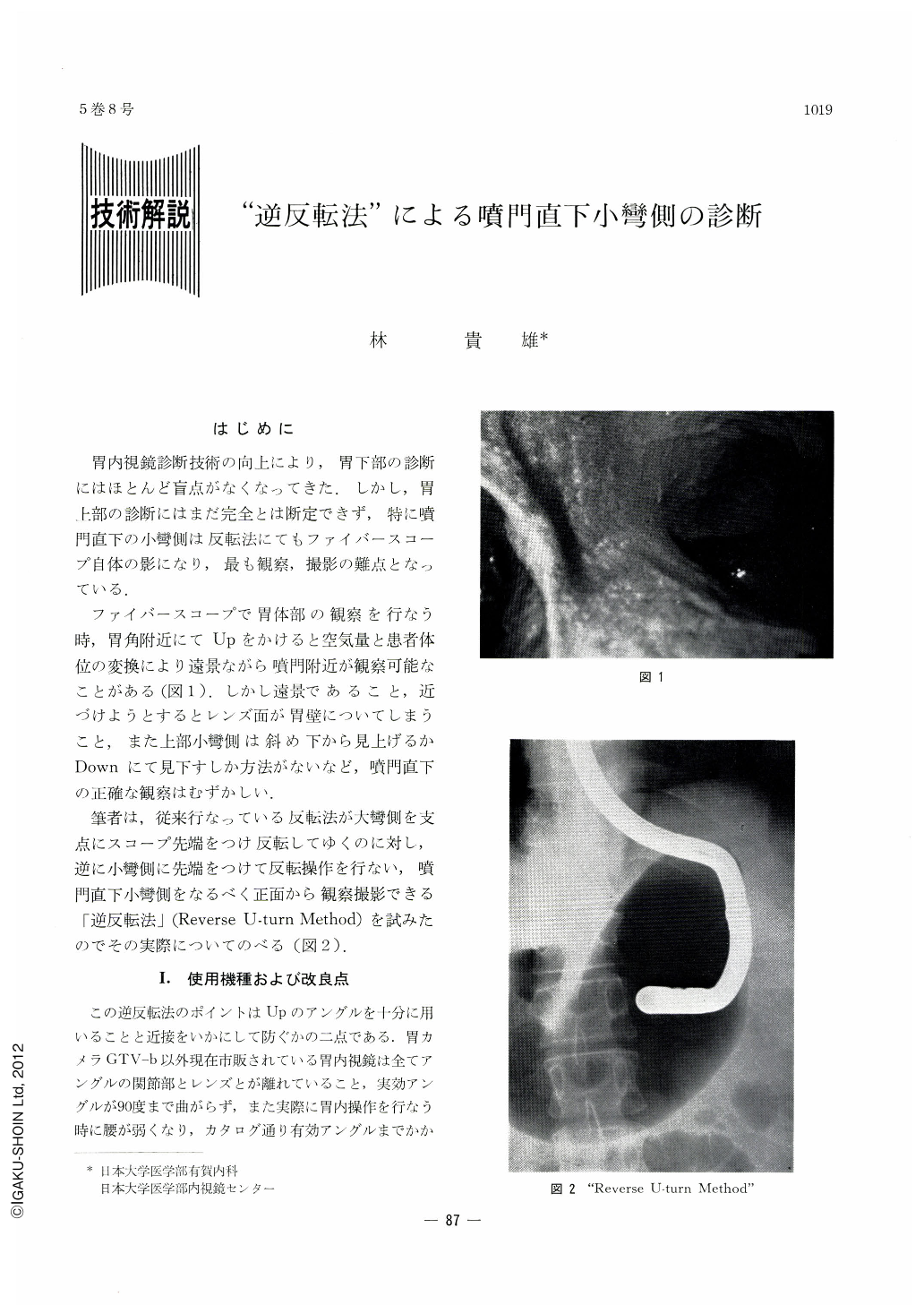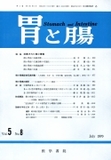Japanese
English
- 有料閲覧
- Abstract 文献概要
- 1ページ目 Look Inside
はじめに
胃内視鏡診断技術の向上により,胃下部の診断にはほとんど盲点がなくなってきた.しかし,胃上部の診断にはまだ完全とは断定できず,特に噴門直下の小彎側は反転法にてもファイバースコープ自体の影になり,最も観察,撮影の難点となっている.
ファイバースコープで胃体部の観察を行なう時,胃角附近にてUpをかけると空気量と患者体位の変換により遠景ながら噴門附近が観察可能なことがある(図1).しかし遠景であること,近づけようとするとレンズ面が胃壁についてしまうこと,また上部小彎側は斜め下から見上げるかDownにて見下すしか方法がないなど,噴門直下の正確な観察はむずかしい.
筆者は,従来行なっている反転法が大彎側を支点にスコープ先端をつけ反転してゆくのに対し,逆に小彎側に先端をつけて反転操作を行ない,噴門直下小彎側をなるべく正面から観察撮影できる「逆反転法」(Reverse U-turn Method)を試みたのでその実際についてのべる(図2).
Although by the recent progress of stomach endoscopy it is now possible to make precise diagnosis on lesions in the lower part of the stomach, those in its upper part, especially on the lesser curvature below the cardia, cannot be observed and photographed well because of their being in the shadow of the fiberscope itself even if U-turn method is employed.
It is sometimes possible to observe the area below the cardia though in a distant view by setting the angle of the fiberscope “Up” as it is at the angulus and controlling air volume and position of the patient. However, it is difficult to observe thoroughly the lesser curvature below the cardia, for it can be seen only in a distant view, or from above or below, and the lens surface is apt to stick to the stomach wall when a close-up is to be taken.
In order to get a front view of the lesser curvature below the cardia, I have tried “Reverse U-turn Method”; that is, contrary to the conventional U-turn method in which the fiberscope is turned over with its tip pressed against the wall of the greater curvature, the fiberscope is turned over on that of the lesser one. I will give details of the “Reverse U-turn Method” as follows.

Copyright © 1970, Igaku-Shoin Ltd. All rights reserved.


